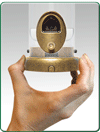For this product profile I thought I would focus on affordability. Bird feeding doesn’t have to be an expensive endeavor, in fact you can attract birds by simply throwing seed on the ground. However feeders allow us to bring birds in for better viewing and watching them is the number one reason to feed.
Woodlink Sunflower and Nyjer tubes
These two are priced at $22 and have everything you need in a Nyjer or Sunflower tube feeder. Metal top and bottom, and ports for durability, and a quick release base for cleaning without any tools. I would recommend either of these to anyone looking for a functional and affordable tube feeder.
Birds Choice Tail Prop Suet
We have carried this suet feeder for a very long time and it continues to be one of our favorites for most applications. At $22 this is a very sturdy suet feeder. Made from recycled plastic it is nice and stable when birds land on it. The added tail prop gives woodpeckers something to brace their tale against.
Peanut wreath
As far as whole peanut feeders this one is great! Blue jays and woodpeckers love this feeder and at $19 it’s a really fun way to offer whole peanuts.
Panorama feeder
This feeder has turned into quite the popular choice for customers and birds. For $22, It feeds Sunflower, Safflower or any type of blend. It’s wide round perch is great for large as well as small birds. This company also makes a double sized version.
Birds Choice Shelled peanut feeder
Shelled peanut feeders are great for attracting woodpeckers, titmice, nuthatch, and even the occasional Carolina Wren. At $17 this is a great way to try out a shelled peanut feeder without breaking the bank. It can also feed black oil sunflower.
Woodlink Goldfinch Feeder
Birds Choice Tail-prop Suet
Birds Choice Shelled Peanut/Sunflower Feeder
Woodlink Sunflower Feeder
Whole Peanut Wreath
Panorama Feeder
Don’t forget, starting February 14th and going through the 17th is the Great Backyard Bird Count. The cold temperatures should be great for bird numbers at feeders, so lets count some birds! Visit birdcount.org for more information and how to get started.
Our annual seed and bird feeder sale is still going on through February 22. Save 20% on all feeders, iron hooks, squirrel baffles, hangers, and poles. And save 10% on all feed and suet. For more info on the sale click here to read our full flyer.













